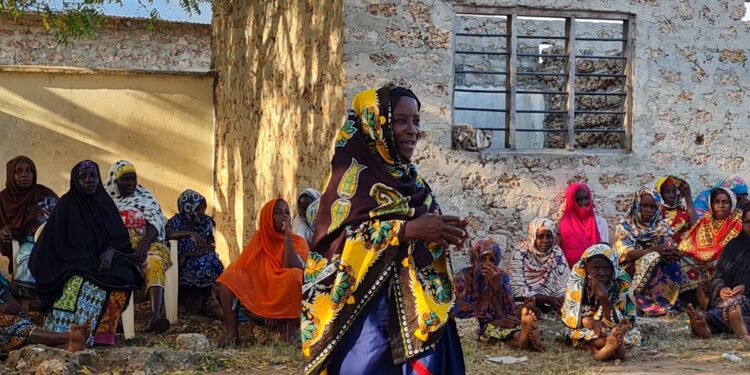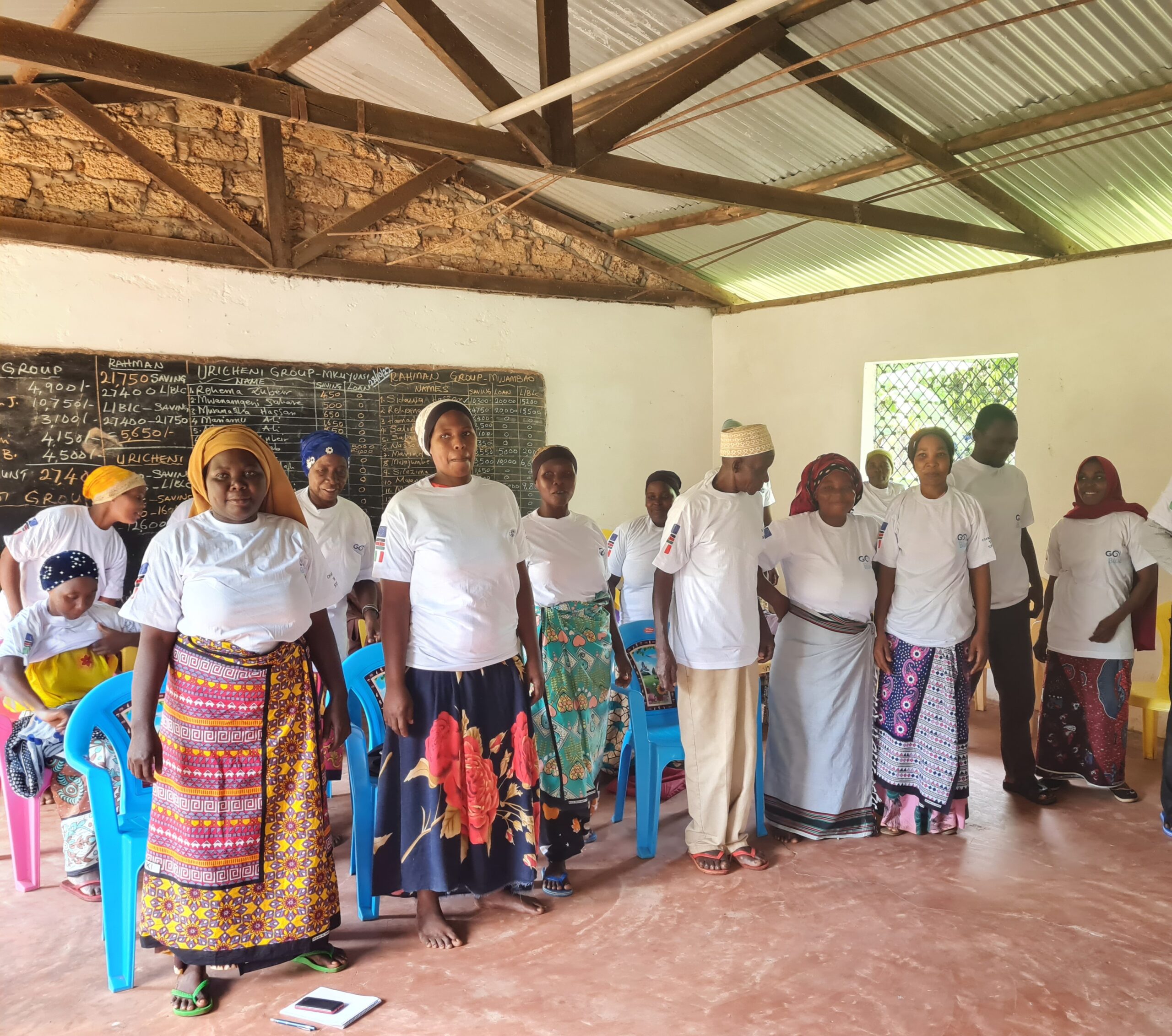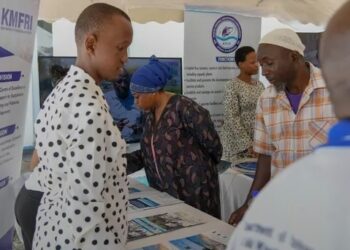The impact of climate change on women’s lives – The changing climate affects everyone, but it is the world’s poorest and those in vulnerable situations, especially women and girls, who bear the brunt of environmental, economic and social shocks. But the same women and girls are also early adopters of new agricultural technologies, first responders when disasters strike, and important decision makers at home on energy and waste. So Climate Action cannot be successful or sustainable if it does not include women.
The problem of climate change has become the most important and dangerous issue on the list of international problems, which in turn imposes mandatory cooperation among the countries of the world to reduce its repercussions, especially after its frequency has increased recently and heat waves, droughts, hurricanes, forest fires and devastating floods have multiplied, and it has become negatively affecting the security and stability of countries, especially those suffering from conflicts and unstable situations.
While climate change affects everyone, it does not affect everyone equally. Vulnerability to climate change is exacerbated by inequity and marginalization associated with gender, ethnicity, low income and other socio-economic factors. It is well established that climate change has a greater impact on the most vulnerable people in the world, both in developed and developing countries, and exacerbates existing inequalities. Women often face greater risks and greater burdens from the effects of climate change in situations of poverty and due to existing cultural roles, responsibilities and norms, economic stress caused by disasters and climate change can lead to increased cases of child marriage, early marriage and forced marriage, as an adaptation strategy.
Currently, it is estimated that more than 1.5 million girls are getting married early as a direct result of climate change and let’s not forget that in many societies, women are responsible for household energy, food, water, care for the young and the elderly. In developing countries in particular, the consequences of climate change can increase the burden on women and girls, for example, forcing them to travel longer distances to obtain daily supplies, leaving less time for paid work and potentially exposing them to greater risks to their personal safety. Women account for about 80% of those displaced by climate change, according to a UN report, which makes them more vulnerable to violence, especially sexual violence.
On the other hand, women make up 70% of the world’s poor population, which makes them more vulnerable to climate change based on UN statistics. Poverty leads to a low level of Education, which hinders their ability to access information and assistance related to climate change and disasters compared to men. Women also represent a high percentage of poor communities that rely on climate-sensitive livelihoods such as agriculture, making them disproportionately vulnerable to climate change. Women also work in the informal sector and in small enterprises more than men, and these sectors are often the most affected and least able to recover from the effects of disasters.
The dark side of women’s stories due to climate change
In Ivory Coast, for example, women make up 70 percent of the agricultural sector, but they own only 3 percent of the land they cultivate. Using traditional, labor-intensive methods, women struggled to make a profit from the production of shea butter, an industry for which the country is famous. When UN-Women, together with local partners, created a program that helped women modernize the process, focusing on reducing deforestation, it was able to expand production to create a superior product that also allowed them to meet competitive standards in the market and increase their profit margins.
In Mali, women have become increasingly frustrated by the increasing degradation of land and Natural Resources, which threatens their livelihoods in agriculture. United Nations Programme has introduced sustainable farming techniques, helping them to modernize agricultural techniques and master environmentally friendly conservation practices. In a country where women make up half of the population working in agriculture, these skills also go a long way to prevent women from becoming more vulnerable and vulnerable to poverty.
Cattle raiding is common in South Sudan, and it is intimately linked with men’s needs to pay a good dowry for a young bride. The result is a culture of violence, including sexual violence. And the backdrop is climate change and environmental degradation, which intensifies hunger, reduces water availability and kills cattle.
Women and children walk to collect water from a well in the Gwembe Valley, Zambia. Since 2018, the area has been deeply affected by drought that has left 2.3 million Zambians in severe food insecurity.
Women in the face of climate change
They contribute the most to the fight against climate change and the defense of environmental rights, as scientists and researchers have found that women prioritize the issue of climate change and have a tendency to join environmental movements.
Why women must be empowered to face climate change?
It is crucial for a series of reasons:
- Investing in gender equality and women’s empowerment has far-reaching benefits, including environmental conservation, poverty reduction, and achieving the Sustainable Development Goals (SDGs). By addressing climate change from a gender perspective, we can also address women’s rights and promote greater gender equality;
- By involving women in Community Planning and disaster response efforts, we can build stronger, more resilient communities that are better equipped to meet the challenges of climate change;
- Women are aware by first-hand experience of the effects of climate change, they see opportunities to address them on the ground;
- The empowerment of women in agriculture can also have a positive impact on climate adaptation. By providing the right technology and resources, we can promote more sustainable farming and conservation practices. By reducing poverty, we can help individuals better adapt to the effects of climate change;
- Women play an important role in the file of climate change and biodiversity, and have become an icon to link the two files, they are the beginning of awareness and rationalization of consumption, environmental protection and resource management, and she is also responsible for changing the behavior of her family members, in order to preserve natural resources, and perhaps the allocation of one of the qualitative days of the climate summit named women’s and gender day reflects the importance of the role of women in the face of climate change and is also one of the segments directly affected by climate change;
- Women have an important role and are an essential element and an active factor to achieve the hoped-for change in dealing with various aspects of climate change, as they manage household resources and affect the rational consumption habits of the whole family. Their role and work in care leads to the formation of consumption habits of future generations and the adoption of environmentally friendly lifestyles;
- With sufficient awareness and facilitating women’s access to information, this will lead to a greater willingness of women to adopt environmentally friendly, more sustainable and less climate-changing lifestyles;
- Indigenous women, in particular, have long been at the forefront of conservation efforts and have invaluable knowledge and experience that can help build resilience and reduce greenhouse gas emissions.
The spirit and vitality of women as a catalyst for change should never be underestimated as inspiring and resilient women are on the front lines of protecting our planet every day. By engaging more women in climate action, we can create a more sustainable and equitable future for all.
The impact of climate change on women’s lives








